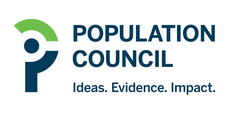Population Council
|
Requests for use: Contact Population Council. | |
| Formation | 1952 |
|---|---|
| Type | NGO |
| Purpose | Reproductive health |
| Headquarters | New York City, USA |
Founder | John D. Rockefeller III |
Budget | $74 million |
| Website | popcouncil.org |
The Population Council is an international, nonprofit, non-governmental organization. The Council conducts biomedical, social science, and public health research and helps build research capacities in developing countries.[1][2] One-third of its research relates to HIV and AIDS; its other major program areas are reproductive health and poverty, youth, and gender. It held the license for Norplant contraceptive implant, and now holds the license for Mirena intrauterine system. The Population Council also publishes the journals Population and Development Review, which reports scientific research on the interrelationships between population and socioeconomic development and provides a forum for discussion of related issues of public policy, and Studies in Family Planning, which focuses on public health, social science, and biomedical research on sexual and reproductive health, fertility, and family planning.
The organization
Established in 1952 by John D. Rockefeller III, with important funding from the Rockefeller Brothers Fund, the Council is governed by an international board of trustees. The 2006 board includes leaders in biomedicine, business, economic development, government, health, international finance, the media, philanthropy, and social science.
Headquartered in New York City, the Population Council has 18 offices in Africa, Asia, and Latin America and does work in more than 60 countries. With an annual budget of around $74 million, it employs more than 500 people from 33 countries with expertise in a wide array of scientific disciplines. Roughly 55 percent are based outside the United States.
Eugenicist origins
The Council has its roots in the discredited eugenics movement. The first president of the Council was a eugenicist appointed by Rockefeller; Frederick Osborn, author of Preface to Eugenics (New York, 1940), leader of the American Eugenics Society, and one of the founding members of the Pioneer Fund. Osborn was vice president or president of the Population Council until 1959. In 1968 he wrote, "Eugenic goals are most likely to be achieved under another name than eugenics."[3]
Reproductive health
The Council conducts biomedical research to develop contraceptives and social science research to better understand the factors influencing access to and decision-making around contraceptives.[4] Its fundamental research on reproductive and immunological processes serves not only as the basis for the development of new contraceptive methods to meet the needs of both women and men, but also for new hormone therapies and AIDS-prevention products.
In the 1960s, the Council played a key role in documenting the large numbers of people in poor countries who lacked access to contraceptives and in conducting research to design and evaluate public family planning programs. At the same time, the Council's biomedical researchers worked to develop new contraceptive methods, such as the intrauterine device.
Some contraceptives available in some countries today were developed by the Population Council: the Copper T IUD, Norplant, Jadelle (Norplant II), and Mirena. More than 50 million Copper T IUDs have been distributed in over 70 countries. Norplant was replaced by Jadelle.
The British medical journal Lancet said of the Population Council, "Most non-governmental organisations claim to promote change for the better; the Population Council actually has hard evidence of having changed the lives and expectations of hundreds of millions of people."[5]
See also
- Birth control movement in the United States
- Demography
- Sustainable development
- Rockefeller family
- American Eugenics Society
- Mifepristone (RU-486) a drug developed by population council
References and further reading
- ↑ Population Council | Media Center | Key Facts
- ↑ Population Council | About the Council
- ↑ Betsy Hartmann (2006). "Everyday Eugenics". Zmag. Retrieved 2015-02-15.
- ↑ Population Council | Reproductive Health Program Description
- ↑ The Lancet. (Vol. 361, June 7, 2003, review)
- Memoirs, David Rockefeller, New York: Random House, 2002.
External links
- Population Council official website
- Population Council senior management and board of trustees
- Population and Development Review
